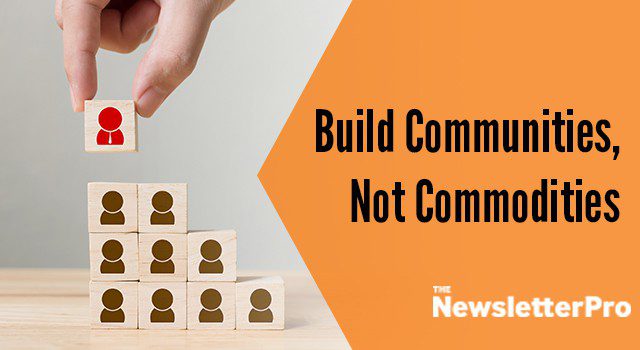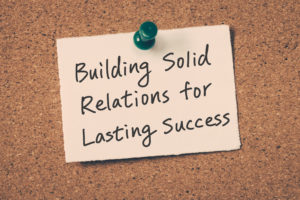I see many people confused about the businesses they are in. Entrepreneurs feel that their industry defines their business, but is that true? Am I in the newsletter or publishing business? What about the content creation business? After all, we create thousands of pages of content each month. I send this newsletter to over 10,000 people a month. Maybe I’m in the education business.

The truth of the matter is this: I’m not in any of those businesses, nor do I want to be. Those are commodity businesses that can be ripped off and duplicated easily.
The Relationship Business

My real business is helping you build a community and develop relationships, with the goal of bringing more people into your community and helping them want to stay and refer family and friends. I help you get your community members to buy more products and services from you that will benefit their lives.
My real business is relationship marketing.
Sure, I use a newsletter to start and build on that community. Our writers develop content to foster relationships and remind people of the all the products or services you offer. We run promotions to generate more referrals. Our staff even educates customers with the content we create on behalf of our clients. But ultimately, we want your customer to feel like they have a relationship with you and are part of a community.
Lessons From the Shave Club

This concept of relationship marketing is not an easy sell, but, more and more, we see even larger companies, including billion-dollar brands, implementing this strategy.
Back in early 2014, Dollar Shave Club, the subscription razor service that made the amazingly funny viral video titled “Our Blades are F******g Great,” began sending a monthly print newsletter, The Bathroom Minutes, to each of its 1.1 million active members.
Dollar Shave Club’s senior vice president of marketing, Adam Weber, said, “One of our most important marketing vehicles is our actual box,” which includes their product and print newsletter. The Bathroom Minutes combines editorial content with product updates and company news, and it informs and entertains to make the brand’s loyal users “feel like they’re part of a bigger community — part of something more than just buying razors.”
From Razors to Relationships

Aren’t these guys just in the razor business? Why do they add the expense of a newsletter to their packaging? I assure you they don’t get 1.1 million of those printed and inserted for free.
It’s simple. They know they’re actually in the community business. With their subscription business model, the name of the game is customer churn and customer lifetime value. Making sure they improved those areas of their company was a priority, so what did they do?
- They had a solution for people: good but inexpensive razors.
- They created a unique customer experience. The Dollar Shave Club had aesthetic packaging, a good welcome email, and sometimes sent out free samples with your order. They included The Bathroom Minutes each month (notice it was not quarterly or bi-monthly) with messages from the founder at the start of each issue. Based on their strategy, I’m now wondering if I had a consultation call with them in the early days.
From Relationships to Retention
Finally, the benefit of the customer experience was that they increased customer lifetime values. Could they track the ROI 100% on the extra money they put into the packaging, free samples, or

The Bathroom Minutes? My guess is they couldn’t. But with all the right pieces of the puzzle in place, they
ultimately started and, in a few short years, sold the company for $1 billion in cash.
Minding Your Own Business
I’m a big believer that getting to the right answers starts with asking the right questions. So I ask again, what business are you in? Are you in the commodity business or the relationship business? Do you need people to buy your products or services? Do you want and need referrals or repeat business?
Understanding what business you’re really in and developing products and services to that end is what allows you to grow faster, make more money, and ultimately, serve more people.






